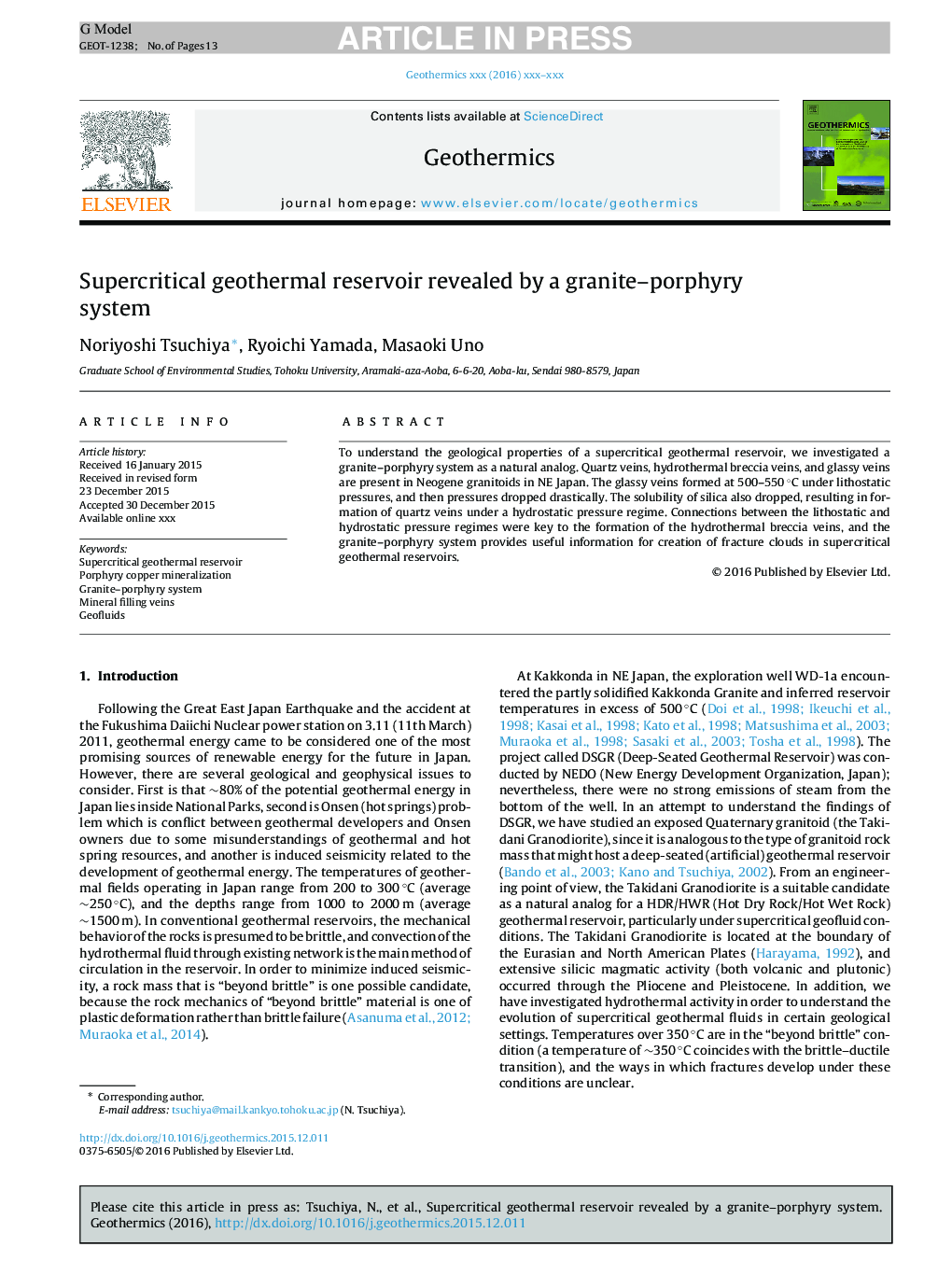| Article ID | Journal | Published Year | Pages | File Type |
|---|---|---|---|---|
| 8088843 | Geothermics | 2016 | 13 Pages |
Abstract
To understand the geological properties of a supercritical geothermal reservoir, we investigated a granite-porphyry system as a natural analog. Quartz veins, hydrothermal breccia veins, and glassy veins are present in Neogene granitoids in NE Japan. The glassy veins formed at 500-550 °C under lithostatic pressures, and then pressures dropped drastically. The solubility of silica also dropped, resulting in formation of quartz veins under a hydrostatic pressure regime. Connections between the lithostatic and hydrostatic pressure regimes were key to the formation of the hydrothermal breccia veins, and the granite-porphyry system provides useful information for creation of fracture clouds in supercritical geothermal reservoirs.
Keywords
Related Topics
Physical Sciences and Engineering
Earth and Planetary Sciences
Geochemistry and Petrology
Authors
Noriyoshi Tsuchiya, Ryoichi Yamada, Masaoki Uno,
